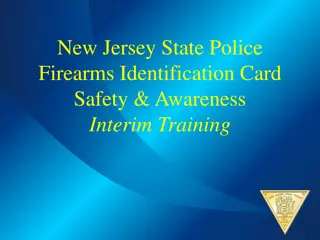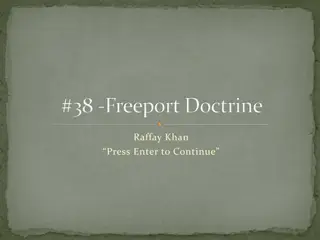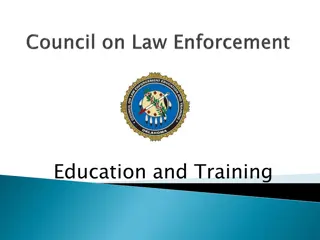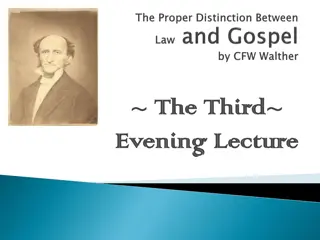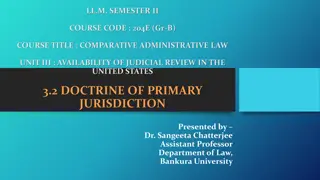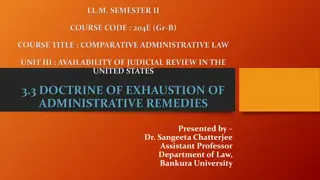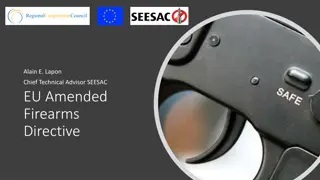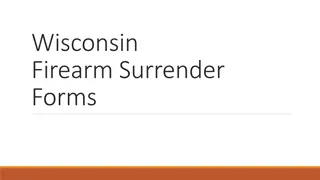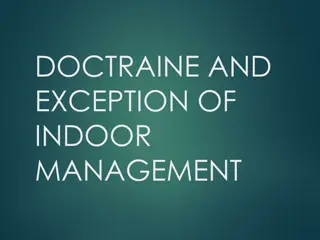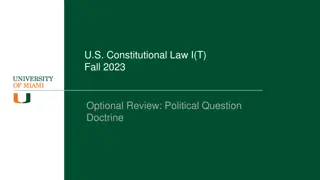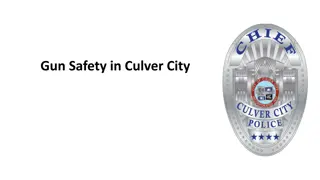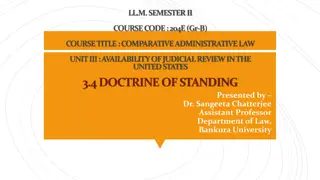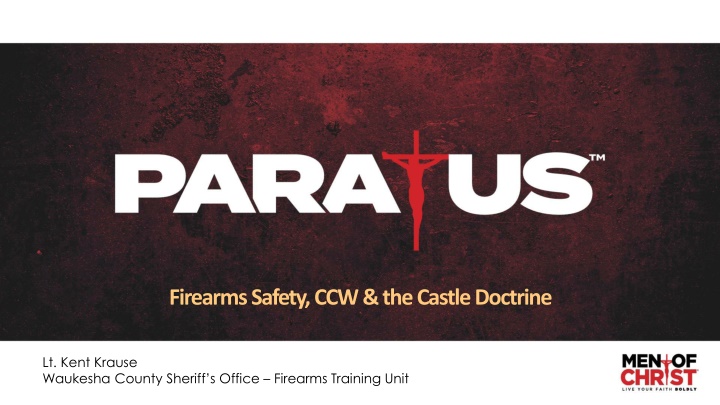
Firearm Safety and CCW Guidelines for Responsible Handling
Learn essential firearm safety rules to prevent accidental injuries or deaths. Always treat every gun as if it's loaded, keep the muzzle pointed safely, control your trigger finger, and identify your target before shooting. Additional safety considerations include avoiding alcohol or drugs, keeping firearms away from children, and using the correct ammunition.
Download Presentation

Please find below an Image/Link to download the presentation.
The content on the website is provided AS IS for your information and personal use only. It may not be sold, licensed, or shared on other websites without obtaining consent from the author. If you encounter any issues during the download, it is possible that the publisher has removed the file from their server.
You are allowed to download the files provided on this website for personal or commercial use, subject to the condition that they are used lawfully. All files are the property of their respective owners.
The content on the website is provided AS IS for your information and personal use only. It may not be sold, licensed, or shared on other websites without obtaining consent from the author.
E N D
Presentation Transcript
Firearms Safety, CCW & the Castle Doctrine Lt. Kent Krause Waukesha County Sheriff s Office Firearms Training Unit
Fundamental Firearm Safety Rules Nearly all accidental firearm injuries and deaths result from failure to follow these rules These rules must be followed whenever you handle a firearm New users: Practice the rules so they are second nature. Experienced users: Have you become complacent? Do not allow your experience to turn into complacency.
Fundamental Firearm Safety Rules 1. Treat every gun as if it is loaded Even if you are certain the weapon is empty, always treat it as a loaded gun. Don t do anything with an unloaded gun that wouldn t be safe with a loaded gun. Many people have been accidentally killed by unloaded guns. Never accept another person s word that a gun is unloaded verify this for yourself.
Fundamental Firearm Safety Rules 2. Never let the muzzle cross anything you are not willing to destroy Imagine a laser beam coming out of the barrel of your weapon. Never let that laser touch anything even for a moment that you aren t willing to shoot. Keep the weapon pointed in a direction that will safely stop any bullet fired.
Fundamental Firearm Safety Rules 3. Keep your finger off the trigger and outside the trigger guard until you want the gun to fire Keep your index finger extended along the frame of the weapon until your sights are on your target and you want to fire. This prevents you from unintentionally firing because you were startled or clutched something with your other hand.
Fundamental Firearm Safety Rules 4. Know your target and what s beyond it Always positively identify your target as what you intend to shoot. Be absolutely certain of what or who you are shooting. Bullets may travel through a target and strike something behind it. You may miss, especially under stress.
Additional Safety Considerations Do not allow children or unauthorized users access Obtain firearm training Handle weapons only while sober No alcohol or illegal drugs No over-the-counter drugs, narcotics, or prescription drugs that could impair judgment or physical abilities Inspect and maintain your weapon and CCW equipment Use the correct ammunition Follow manufacturer recommendations
Safe Firearm Storage Firearms are safest when least accessible: Unloaded Locked up Ammunition locked in another location Accessible firearms demand extra precautions
Most Secure: Unloaded with action locked open
Rapid-access storage box prevents access without knowing the code.
Weapon Concealment Many possible methods. Not all of them are safe! Carry in a consistent manner If you carry five different ways, will you remember which flavor of the day you re using in the heat of the moment? Use a quality holster You can t just tuck a gun in your waistband and expect it to stay there Good holster + mediocre gun = you can defend yourself Bad holster + great gun = you re unsafe or defenseless
Characteristics of a Good Holster Covers the trigger Stays in place Comfortable enough to use for long periods Retains gun until needed Releases gun when needed Gun can be drawn with either hand
Safety Considerations Different systems have different safety considerations Mobility Concealability Speed of access Belt Holsters Ankle Holsters Holsters in Clothing Under Arm Holsters Off-Body Carry
Avoid Need to Use Your Weapon Avoid confrontations Behavior Nike If it s so unsafe you don t want to go without a gun why are you going there at all? defense run away if reasonable
Avoid Need to Use Your Weapon The best way to survive an attack is to avoid it Be aware of your surroundings Detect the situation in time to avoid it Don t stumble into the middle of an event Recognize common signs of being evaluated as a victim Trust your intuition. If you feel uncomfortable in a situation, leave! De-escalate confrontation
Encounters with Law Enforcement Tell the officer you have a concealed carry license and are carrying a weapon Do not reach for the weapon or make any quick movements Keep your hands visible Traffic stops Stay in the vehicle Roll down your window Turn on the vehicle s dome light at night Place your hands on the steering wheel Follow the officer s instructions
Self Defense & Defense of Others Gunshots are always deadly force You cannot use deadly force unless you reasonably believe you are in imminent threat of death or great bodily harm Reasonably believe Belief must be objective Belief can be mistaken
Self Defense & Defense of Others You cannot use deadly force unless you reasonably believe you are in imminent threat of death or great bodily harm Imminent threat Intent Weapon Delivery system Preclusion No other reasonable alternative Deadly force is a last resort
Self Defense & Defense of Others You cannot use deadly force unless you reasonably believe you are in imminent threat of death or great bodily harm Death or great bodily harm
Castle Doctrine In certain circumstances, use of deadly force may be presumed lawful when someone forcibly enters your home, business, or vehicle while you are present You must still follow all firearm safety rules Rule four be certain of your target Tragic examples of homeowners mistakenly shooting family members believed to be intruders Regardless of the castle doctrine, you must satisfy the target requirements shown next
Self Defense & Defense of Others Target requirements must be met before shooting: Target acquisition Target identification Target isolation You must stop shooting when the threat has ceased Chasing your assailant to continue the fight is NOT recommended!
Self Defense & Defense of Others If all you have is a hammer, everything looks like a nail Do you have a plan to defend yourself when you re not in danger of death or great bodily harm? Other alternatives are outside the scope of this course
Post-Incident Safety Immediately notify law enforcement If anyone was wounded, render aid if safe to do so Secure your weapon when safe to do so Try to avoid having a weapon in your hand when police arrive Immediately follow all law enforcement directives Do not turn towards officers with a gun in your hand. When possible, point out any witnesses and evidence
Defense of Property Right to use reasonable force in defense of property Deadly force is not reasonable solely for defense of property Armed robbery example Theft example Potential for situation to escalate. Is it worth the confrontation?


